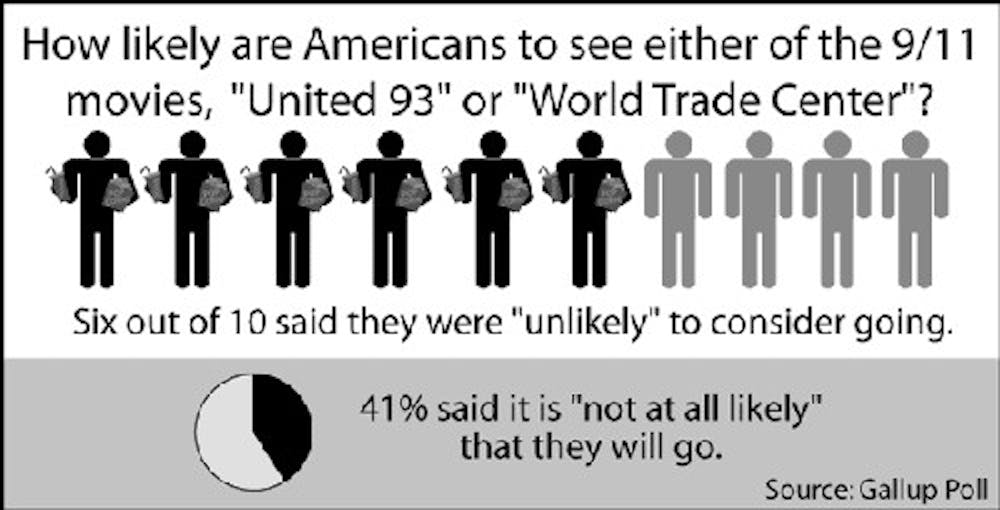Some people say it's too early for a film about 9/11. The emotional gauntlet that director Paul Greengrass puts us through in "United 93" may verify concerns about the film's timing. But more likely, these reactions are simply the product of filmmaking at its best.
"United 93" follows the events of Sept. 11, 2001 in real-time: we see everything from the hijackers praying in their hotel room to the jaw-dropped responses of air traffic controllers who watch jumbo jets explode into the World Trade Center.
While Greengrass makes sure to account for everything that happened that morning, the crux of his film is the recreation of what may have occurred on United 93 - the fourth hijacked plane that was en route to the nation's capital. The passengers, however, prevented it from reaching its intended destination, resulting in a crash landing in Shanksville, Pa.
Making films about real-life tragedies is nothing new for Greengrass. He uses the same "shaky camera technique" as he did in "Bloody Sunday," a film about an Irish protest march turned massacre in the '70s. With the same documentary touch, Greengrass makes us feel as if we're hostages on a plane, just as we dodged shrapnel on Omaha Beach in "Saving Private Ryan." It's no longer just a movie; it's an experience.
Greengrass uses a cast of unknowns, a minimalist script, almost no musical score, and stays as close as he can to the events that transpired. There are no jokes, no lead roles, and nothing that could be called a "performance."
The most we get from any one actor are orders given at an air control center or a quick goodbye on a cell phone on the plane. He doesn't bother developing characters, or building background stories. We can only use what Greengrass gives us: expressions. We see anger, sadness, exasperation and fear, and we react in kind.
The film drags a bit in its early stages when the narrative jumps between air traffic and military centers. Officials bark orders at one another and look nervous, but nothing really gets done.
Gradually though, the tension builds, and the passengers of United 93 realize that it's either "us or them."
What follows is one of the most riveting, engaging and emotionally draining scenes in the history of cinema. Hearts will pound, tear ducts will swell, and images will be burned. Pregnant women and the elderly ought not to get on this plane ride.
"United 93" is not a docudrama that merely narrates the events of 9/11 as did the Pearl Harbor picture "Tora! Tora! Tora!" It is by no means a history lesson. If anything, it's a lesson on the human condition. When the passengers rush the cockpit, it's not for patriotism, nor is it for revenge. It's simply for survival.
The editing, cinematography, and directing are sure to garner Oscar nominations next March, but it is more worthy of acclaim for taking such a sensitive subject, and with it, crafting a piece of artwork that instantly transforms victims into heroes.
The film's timing is not too soon. It won't revive war fever, nor does it use the passengers' deaths to make money. It is a harrowing experience that honors the dead, puts you on that plane, and prompts the question that you may not be willing to answer: what would I do?





